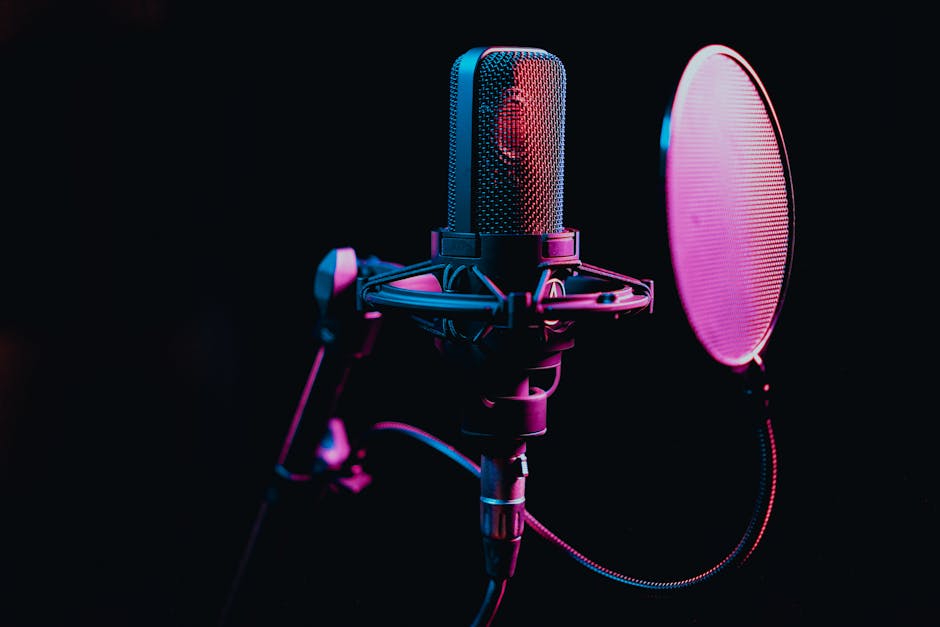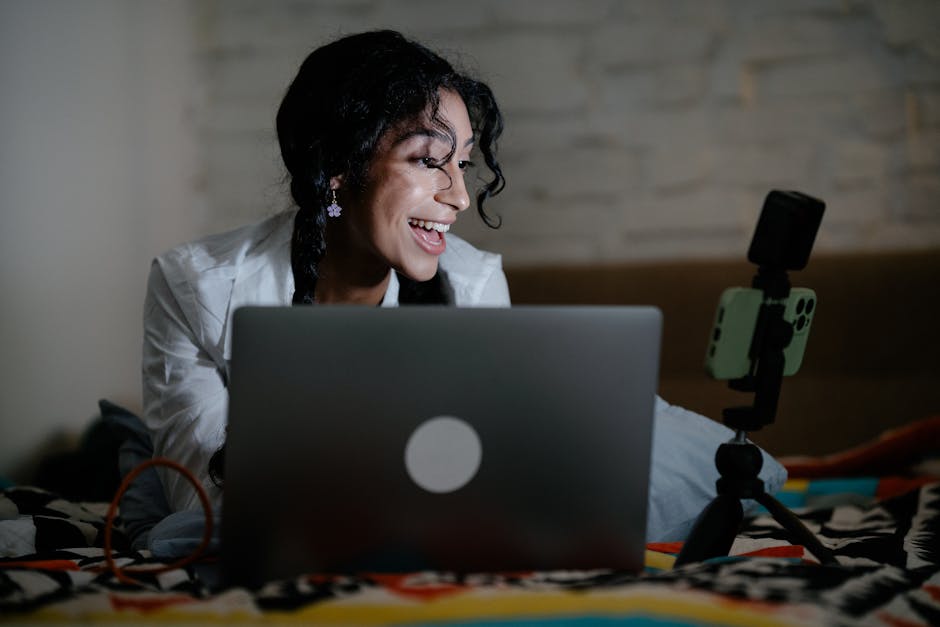How I Use Squadcast (or Zencastr) for High-quality Remote Recordings.
How I Use Squadcast (or Zencastr) for High-quality Remote Recordings
In the world of remote content creation, especially podcasting and online interviews, audio quality is king. A crackly, echoey, or out-of-sync recording can instantly turn off listeners, no matter how compelling your content. After years of experimenting with various setups and platforms, I’ve refined a workflow using tools like Squadcast or Zencastr that consistently delivers professional, high-fidelity audio, even when my guests are thousands of miles away. This isn’t just about pressing record; it’s about a holistic approach, from preparation to post-production, all designed to squeeze every ounce of quality out of these incredible platforms. Let me walk you through my personal strategy for achieving those pristine remote recordings.
Laying the Groundwork: My Pre-Recording Ritual for Pristine Sound
Before any guest even joins the virtual green room, my focus is entirely on preparation. This isn’t just about making sure my microphone is plugged in; it’s about creating an optimal recording environment for everyone involved. I’ve learned that the quality of your output is directly proportional to the effort you put into the setup.
My Personal Tech Checklist Before Every Session
- Internet Connection is Paramount: I always ensure I’m on a stable, wired Ethernet connection. Wi-Fi, while convenient, introduces too many variables that can lead to dropouts, latency issues, and ultimately, compromised audio quality. I strongly recommend my guests do the same if possible.
- Headphones, Not Speakers: This is non-negotiable for both myself and my guests. Using headphones eliminates echo and prevents sound bleed from speakers into the microphone, which is a common culprit for muddy audio. Any headphones will do, but good closed-back headphones are ideal for monitoring.
- Dedicated Microphones: While a built-in laptop mic might seem convenient, it’s the fastest way to ruin a high-quality recording. I always use a dedicated USB or XLR microphone (my current favorite is the Rode NT-USB Mini for its simplicity and quality). I educate my guests on the importance of this, even suggesting a simple lavalier mic if they don’t have a studio-grade option.
- Quiet Environment: I do a quick sound check of my recording space for any ambient noise – air conditioning, refrigerator hum, street traffic. I close windows, turn off unnecessary appliances, and even put a “recording in progress” sign on my door. I also advise my guests to find the quietest room possible, often suggesting a closet or a room with soft furnishings to minimize echo.
- System Optimization: Before opening Squadcast or Zencastr, I close all unnecessary applications on my computer. This frees up processing power and bandwidth, reducing the chance of glitches during the recording.
Guiding My Guests to Optimal Setup
A significant part of achieving high quality lies in empowering my guests. I send them a simple, clear pre-recording guide well in advance. This guide covers:
- The importance of a good internet connection and headphones.
- Recommendations for using an external microphone.
- Tips for finding a quiet, acoustically treated space (even suggesting a blanket fort!).
- A reminder to test their setup before the call.
This proactive approach drastically reduces technical issues during the actual recording, allowing us to focus on the conversation.
Navigating the Live Session: In-Platform Strategies for Optimal Capture
Once the groundwork is laid, the actual recording session within Squadcast or Zencastr becomes a smooth process. My strategy here is about leveraging the core strengths of these platforms to ensure every word is captured with clarity and fidelity, while also being prepared for the unexpected.
My Go-To Settings for Maximum Quality
- Separate Tracks are Non-Negotiable: This is the absolute cornerstone of my high-quality workflow. Both Squadcast and Zencastr record each participant’s audio to a separate track locally. This means if my guest’s internet briefly falters, my audio isn’t affected, and vice-versa. More importantly, it gives me unparalleled control in post-production for individual leveling, noise reduction, and sweetening. I always confirm this setting is active.
- Progressive Uploads: I make sure this feature is enabled. It continuously uploads audio segments to the cloud throughout the recording. This is a lifesaver, ensuring that even if a guest’s browser crashes or their internet drops out completely at the end, most of their audio is already safely stored.
- High-Quality Audio & Video Settings: I always opt for the highest available audio quality settings within the platform. For Squadcast, this often means 48kHz WAV files. While video quality is secondary for a podcast, having a decent video feed helps with visual cues and connection, and both platforms handle this remarkably well without compromising audio.
- Sound Check & Levels: Before hitting record, I always do a quick sound check with each guest. I ask them to speak naturally for a few seconds and monitor the input levels within the platform. I instruct them on how to adjust their microphone gain if necessary, aiming for healthy levels that aren’t peaking (clipping) but are strong enough to avoid needing excessive boosting later.
During the Recording: Monitoring and Intervention
Even with the best preparation, things can go wrong. My approach during the live session is to be vigilant but not intrusive.
- Visual Cues: I constantly monitor the audio meters for each participant. If I see a guest’s levels dropping or peaking consistently, I’ll gently interrupt to suggest an adjustment.
- Headphone Check: If I hear an echo or feedback, my first question is always, “Are you wearing headphones?” This resolves about 80% of live audio issues.
- Internet Stability: Both platforms provide indicators of connection stability. If I notice a guest’s connection is consistently poor, I might suggest they try restarting their browser or moving closer to their router during a break, but I try to avoid major troubleshooting mid-sentence.
The goal is to be proactive without disrupting the flow of the conversation, prioritizing the capture of clean audio above all else.
Post-Production Power-Up: Extracting and Polishing Those Individual Tracks
The real magic of using Squadcast or Zencastr for high-quality recordings becomes apparent in post-production. The ability to download separate audio tracks for each participant is, in my opinion, their killer feature. This is where I transform good recordings into great ones.
My Workflow for Pristine Post-Production
- Downloading the Good Stuff: Immediately after the session, I head to the dashboard and download all the individual WAV (or high-quality MP3) tracks. I never rely solely on the combined mix provided by the platform, as that sacrifices granular control.
- The Power of Separate Tracks: Imagine a scenario where your guest has a slight hum in their mic, but your audio is clean. With separate tracks, I can apply noise reduction specifically to their track without affecting mine. If one person speaks too quietly or too loudly, I can adjust their volume independently. This level of control is simply impossible with a single, mixed stereo file. This is also crucial for mastering podcast audio editing.
- My Editing Suite Essentials: I import these individual tracks into my Digital Audio Workstation (DAW) – I personally use Adobe Audition, but Audacity, Reaper, or Logic Pro X are equally capable.
- Step-by-Step Polishing:
- Synchronization: The platforms usually deliver perfectly synced tracks, but I always do a quick visual check of the waveforms.
- Noise Reduction: I apply a gentle noise reduction to each track as needed. The key is subtlety; too much can make audio sound unnatural.
- Leveling: I manually adjust the volume of each track so that all speakers are at a consistent perceived loudness. This prevents listeners from constantly adjusting their volume.
- Compression & EQ: I apply subtle compression to even out dynamic range and a touch of EQ to enhance clarity and warmth, making voices sound more “radio-ready.”
- De-essing: If any speaker has harsh “s” sounds, I use a de-esser plugin.
- Mixing and Mastering: Finally, I mix all tracks together, add any intro/outro music, and apply a final mastering chain (limiter, loudness normalization) to meet industry standards for podcast delivery.




Post Comment